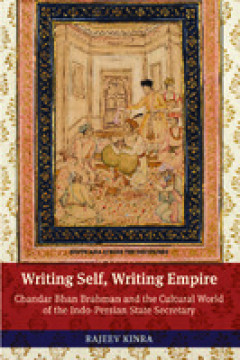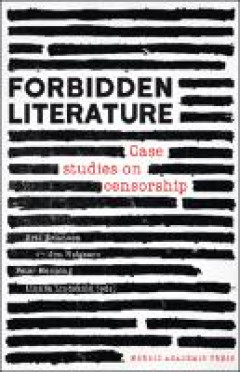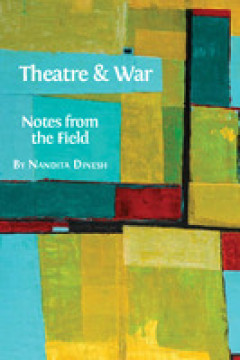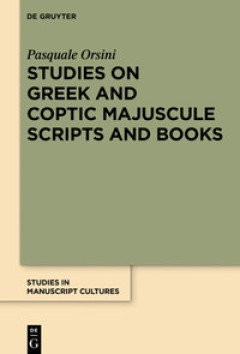Ditapis dengan

Science fiction in Argentina :technologies of the text in a material multiverse
It has become something of a critical commonplace to claim that science fiction does not actually exist in Argentina. This book puts that claim to rest by identifying and analyzing a rich body of work that fits squarely in the genre. Joanna Page explores a range of texts stretching from 1875 to the present day and across a variety of media-literature, cinema, theatre, and comics-and studies the…
- Edisi
- -
- ISBN/ISSN
- 9780472121878
- Deskripsi Fisik
- X, 235 p.
- Judul Seri
- -
- No. Panggil
- 860.935882 PAG s

Colonial Australian fiction :characterTypes, social formationsand the colonia…
Over the course of the 19th century a remarkable array of types appeared in Australian literature: the swagman, the larrikin, the colonial detective, the bushranger, the currency lass”, the squatter, and more. Some had a powerful influence on the colonies’ developing sense of identity; others were more ephemeral. But all had a role to play in shaping and reflecting the social and economic c…
- Edisi
- -
- ISBN/ISSN
- 9781743324615
- Deskripsi Fisik
- -
- Judul Seri
- -
- No. Panggil
- 820.9994 GEL c

The Novel map
Focusing on Stendhal, Gérard de Nerval, George Sand, Émile Zola, and Marcel Proust, The Novel Map: Mapping the Self in Nineteenth-Century French Fiction explores the ways that these writers represent and negotiate the relationship between the self and the world as a function of space in a novel turned map. With the rise of the novel and of autobiography, the literary and cultural contexts of …
- Edisi
- -
- ISBN/ISSN
- 9780810128668
- Deskripsi Fisik
- 263 p.; 22 cm.
- Judul Seri
- -
- No. Panggil
- 843.709384 BRA n

Gender, reading, and truth in the twelfth century
Female Spirituality; Courtly Romance; Use of images; Fiction; Exegesis; Vernacular Literature; Chrétien de Troyes; Wolfram von Eschenbach
- Edisi
- -
- ISBN/ISSN
- 9781641893787
- Deskripsi Fisik
- XII, 419 p.
- Judul Seri
- -
- No. Panggil
- 809.393581 POW g

Poetry and psychiatry
In this volume, Professor Ljunggren introduces the Symbolists and their feverish expectations in detail. Theirs was a time when for a brief moment everything seemed possible. Then came the rude awakening, best described in Bely’s powerful prose masterpiece Petersburg, which serves as the connective thread and recurrent point of reference throughout this collection. Written in the early 1910s,…
- Edisi
- -
- ISBN/ISSN
- 9781618113504
- Deskripsi Fisik
- -
- Judul Seri
- -
- No. Panggil
- 891.70915 LJU p

Rewriting Buddhism :Pali literature and monastic reform in Sri Lanka, 1157-1270
Rewriting Buddhism is the first intellectual history of premodern Sri Lanka’s most culturally productive period. This era of reform (1157–1270) shaped the nature of Theravada Buddhism both in Sri Lanka and also Southeast Asia and even today continues to define monastic intellectual life in the region. Alastair Gornall argues that the long century’s literary productivity was not born of po…
- Edisi
- -
- ISBN/ISSN
- 9781787355156
- Deskripsi Fisik
- XIII, 269 p.
- Judul Seri
- -
- No. Panggil
- 891.37099549309021 GOM r

Metagestures
"What kinds of knowledge and understandings of the world can be generated – and shared – when we use para-academic techniques and sensibilities to decode or respond to relatively orthodox intellectual objects? And what worlds might be possible if we practiced scholarly work from a place of collaboration and pleasure, as joyful fellow explorers? In Metagestures, presented in a playful tête-…
- Edisi
- -
- ISBN/ISSN
- 9781950192267
- Deskripsi Fisik
- x, 221p.:
- Judul Seri
- -
- No. Panggil
- 813.6 NAP m

Writing self, writing empire :Chandar Bhan Brahman and the cultural world of …
"Writing Self, Writing Empire examines the life, career, and writings of the Mughal state secretary, or munshi, Chandar Bhan Brahman (d. ca. 1670), one of the great Indo-Persian poets and prose stylists of early modern South Asia. Chandar Bhan’s life spanned the reigns of four emperors: Akbar (1556–1605), Jahangir (1605–1627), Shah Jahan (1628–1658), and Aurangzeb ‘Alamgir (1658–170…
- Edisi
- -
- ISBN/ISSN
- 9780520961685
- Deskripsi Fisik
- XIX, 371 p.
- Judul Seri
- -
- No. Panggil
- 891.5512 KIN w

Transnational literate lives in digital times
Transnational Literate Lives in Digital Times is a book-length project designed to document how people outside and within the United States take up digital literacies and fold them into the fabric of their daily lives. This research contributes to our knowledge of the impact of digital media on literate practices and also provides a basis for developing approaches for studying and teaching succ…
- Edisi
- -
- ISBN/ISSN
- 9780874218862
- Deskripsi Fisik
- -
- Judul Seri
- -
- No. Panggil
- 808.0420 SEL t

Literacy, sexuality, pedagogy:Theory and practice for composition studies
Despite its centrality to much of contemporary personal and public discourse, sexuality remains infrequently discussed in composition courses and in our discipline at large. Moreover, its complicated relationship to discourse, to the very language we use to describe and define our worlds, is woefully understudied in our discipline. Talk and writing about sexuality surround us. Not only does the…
- Edisi
- -
- ISBN/ISSN
- 9780874217018
- Deskripsi Fisik
- -
- Judul Seri
- -
- No. Panggil
- 808.0420711 ALE l

Writing the reader. Configurations of a cultural practice in the English novel
The history of the novel is also a history of shifting views of the value of novel reading. This study investigates how novels themselves participate in this development by featuring reading as a multidimensional cultural practice. English novels about obsessive reading, written in times of medial transition, serve as test cases for a model that brings together analyses of form and content.
- Edisi
- -
- ISBN/ISSN
- 9783110399844
- Deskripsi Fisik
- 267 p.; 22 cm.
- Judul Seri
- -
- No. Panggil
- 823.009 BIR w

Living with disfigurement in early medieval Europe
This book examines social and medical responses to the disfigured face in early medieval Europe, arguing that the study of head and facial injuries can offer a new contribution to the history of early medieval medicine and culture, as well as exploring the language of violence and social interactions. Despite the prevalence of warfare and conflict in early medieval society, and a veritable indu…
- Edisi
- -
- ISBN/ISSN
- 9781137544391
- Deskripsi Fisik
- x, 282p. : ill.
- Judul Seri
- -
- No. Panggil
- 809.02 SKI l

Forbidden literature:case studies on censorship
"Freedom of the printed word is a defining feature of the modern world. Yet censorship and the suppression of literature never cease, and remain topical issues even in the most liberal of democracies. Today just as in the past, advances in media technology are followed by new regulatory mechanisms. Similarly, any attempt to control cultural expression inevitably spurs fresh discussions about fr…
- Edisi
- -
- ISBN/ISSN
- 9789188909084
- Deskripsi Fisik
- 264p.: ill.
- Judul Seri
- -
- No. Panggil
- 801.9 FOR f

Dickens after Dickens
"[W]e have a long way to travel before we get back to what Dickens meant… G.K. Chesterton, Charles Dickens The twentieth and twenty-first centuries have continued the quest, so aptly described by G. K. Chesterton in 1906, to ‘find’ Charles Dickens and recapture the characteristically Dickensian. From research attempting to classify and categorise the nature of his popularity to a century …
- Edisi
- -
- ISBN/ISSN
- 9781912482214
- Deskripsi Fisik
- xi, 247p..: ill.
- Judul Seri
- -
- No. Panggil
- 823.8 DIC d

Sisters and the English household :domesticity and women's autonomy in ninete…
All books have long histories. The ideas and early versions of this book stretch back to my doctoral work at the University of Texas at Austin, to Kurt Heinzelman’s scholarship on William and Dorothy Wordsworth, and to Richard Sha’s unfailing friendship and encouragement through the years since we were students together. Librarians at t…
- Edisi
- -
- ISBN/ISSN
- 9781783088454
- Deskripsi Fisik
- 216p
- Judul Seri
- -
- No. Panggil
- 820.9352652 ANN s

Theatre and war :notes from the field
"Nandita Dinesh places Kipling’s ""six honest serving-men"" (who, what, when, where, why, how) in productive conversation with her own experiences in conflict zones across the world to offer a theoretical and practical reflection on making theatre in times of war. This timely and important book weaves together Dinesh’s personal narrative with the public story of modern conflict, illustratin…
- Edisi
- -
- ISBN/ISSN
- 9781783742585
- Deskripsi Fisik
- 210 p
- Judul Seri
- -
- No. Panggil
- 809.293581 DIN t

Engaging researchers with data management:the cookbook
- Edisi
- -
- ISBN/ISSN
- 9781783748006
- Deskripsi Fisik
- 170 p.; 23 cm.
- Judul Seri
- -
- No. Panggil
- 808.066 ENG e
- Edisi
- -
- ISBN/ISSN
- 9781783748006
- Deskripsi Fisik
- 170 p.; 23 cm.
- Judul Seri
- -
- No. Panggil
- 808.066 ENG e

Artistic research and literature
What is practice-based literary research? While literature as a discipline is currently not represented in the artistic research discourse, individual writers and scholars have ties to a variety of institutional constellations in which overlaps between literature, art, and research become manifest. 16 of them expand on their methodological approaches as well as their practice, and they analyse …
- Edisi
- -
- ISBN/ISSN
- 9783846763339
- Deskripsi Fisik
- xiv, 206p. : ill.
- Judul Seri
- -
- No. Panggil
- 809 ART a

Tracing manuscripts in time and space through paratexts
As records of the link between a manuscript and the texts it contains, paratexts document many aspects of a manuscript’s life: production, transmission, usage, and reception. Comprehensive studies of paratexts are still rare in the field of manuscript studies, and the universal categories of time and space are used to create a common frame for research and comparisons. Contributions in this v…
- Edisi
- -
- ISBN/ISSN
- 9783110479010
- Deskripsi Fisik
- XII, 308 p.
- Judul Seri
- -
- No. Panggil
- 809.93384 TRA t

Studies on Greek and Coptic majuscule scripts and books
The volume contains a critical review of data, results and open problems concerning the principal Greek and Coptic majuscule bookhands, based on previous research of the author, revised and updated to offer an overview of the different graphic phenomena. Although the various chapters address the history of different types of scripts (i.e. biblical majuscule, sloping poitend majuscule, liturgica…
- Edisi
- -
- ISBN/ISSN
- 9783110575446
- Deskripsi Fisik
- XVI, 260 p.
- Judul Seri
- -
- No. Panggil
- 800 ORS s
 Karya Umum
Karya Umum  Filsafat
Filsafat  Agama
Agama  Ilmu-ilmu Sosial
Ilmu-ilmu Sosial  Bahasa
Bahasa  Ilmu-ilmu Murni
Ilmu-ilmu Murni  Ilmu-ilmu Terapan
Ilmu-ilmu Terapan  Kesenian, Hiburan, dan Olahraga
Kesenian, Hiburan, dan Olahraga  Kesusastraan
Kesusastraan  Geografi dan Sejarah
Geografi dan Sejarah